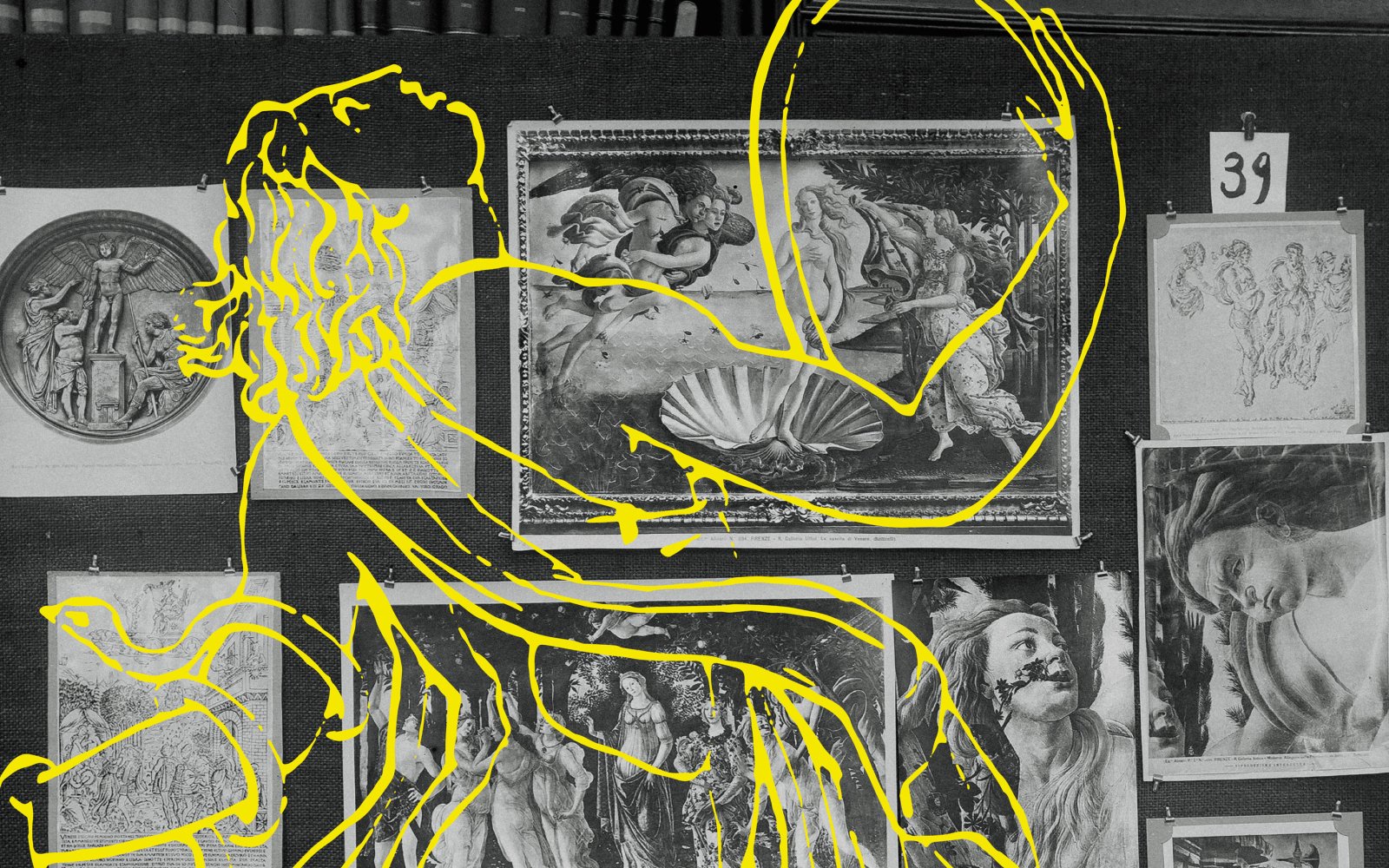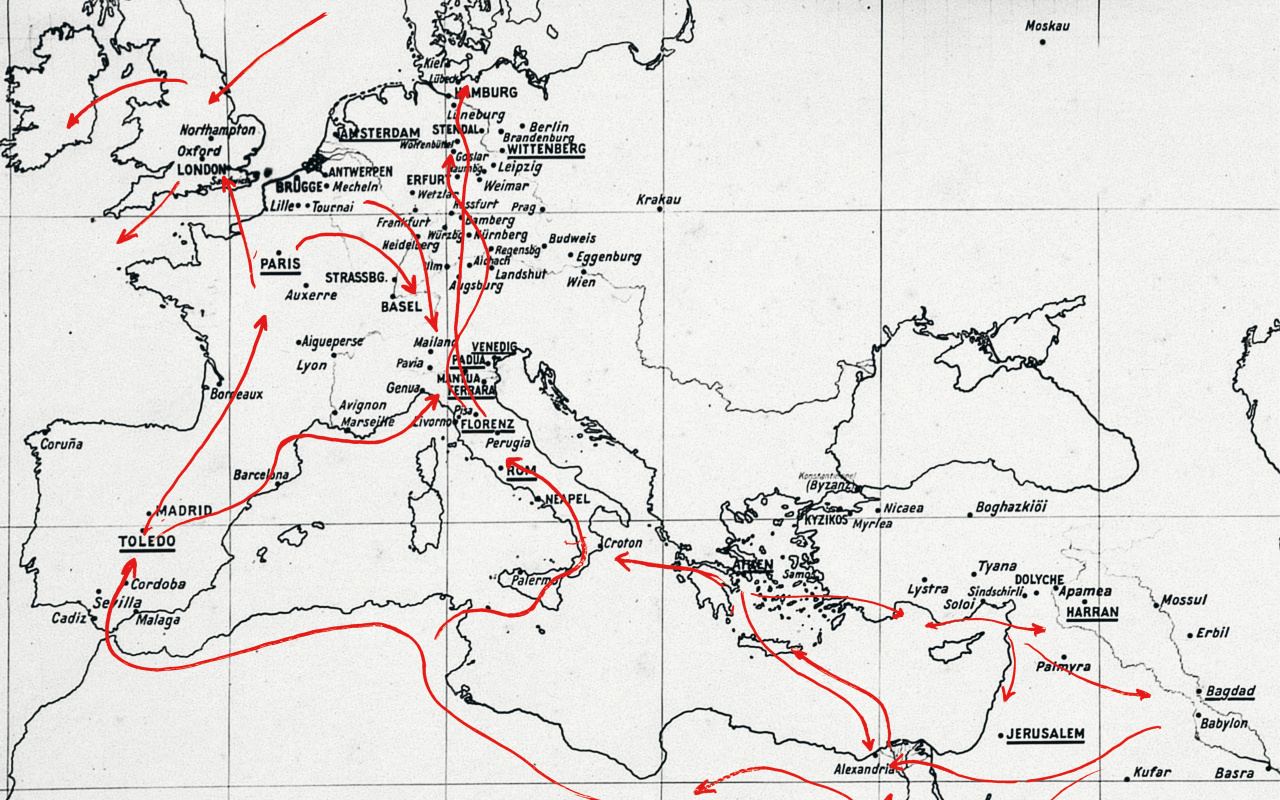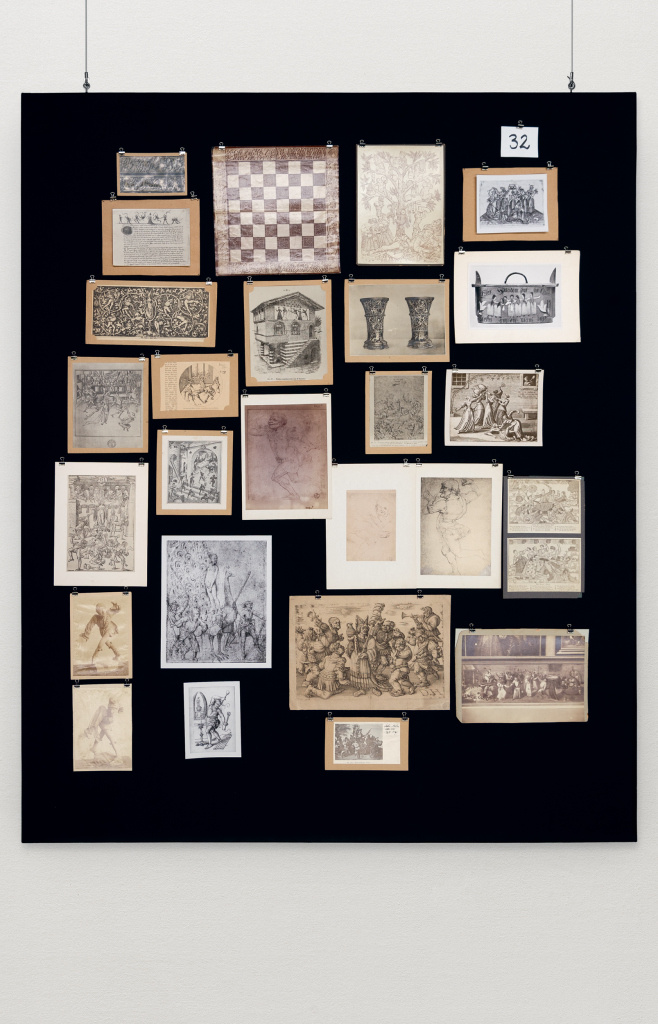Warburg’s Terminology
“God is in the details.”
“Alla francese” – that is the counterpart to “all’antica” – designates the fashion from France that was popular at courts in Italy in the fifteenth century. Women wore tall pointed hats (hennins) und looked like walking statues in close-fitting dresses. In Italy, Early Renaissance artists developed new forms of movement from ancient images, which lent the body more presence. “All’antica” was disseminated through art and ultimately permeated the “bewegtes Leben” [moving life], the reality of urban and courtly life.
In his dissertation on Sandro Botticelli, Warburg coined the term “bewegtes Beiwerk” [moving accessories], a formulation that derived in part from the language of fashion. The German term “Beiwerk” refers to “beigeben,” which means to add something. Here Warburg wants to name the elements of movement – hair blowing magnificently in the wind, fluttering garments – which Botticelli did indeed add to the naked Venus and which were also traceable in literature as moveable props: fixed formulations that were taken on en bloc when ancient narratives entered into poetry.
“Bewegtes Beiwerk” is considered the first of a series of word pairings, some of which sound paradoxical, that Warburg proposed as new descriptive terminology for art history. In 1905 he added the term “Bilderfahrzeuge” [image vehicles]. In the 1920s he even said “automobile Bilderfahrzeuge” [automobile image vehicles], which was at first meant only to describe the tapestries that were produced in Flanders and came to Florence. They were especially popular with the Medicis. Later Warburg expanded the term to include all moveable mediums: graphics, oil on wood, books, and manuscripts. Incidentally, Warburg saw tapestries as a precursor to graphics, because they could be produced in multiple copies from a template and because they incorporated popular scenes.
One excellent observation is the sudden appearance of the “Ninfa/Nympha fluida,” the exemplary figure through which Warburg shows what he means by the recovery of antiquity in art of the Early Renaissance. The pagan origins of the feminine figure who steps into the pictures with moving hair and airy clothing, usually carrying a basket of fruit, are easily recognized once they have been pointed out.
Already in his dissertation on Botticelli, Warburg saw the Ninfa as the central figure of the Primavera and described her impact next to the better-known Venus in the scallop shell. Around 1900 he then “discovered” her in the frescoes of Domenico Ghirlandaio (Santa Maria Novella, Florence). She was treated rather as a “peripheral” figure, a servant. He made her into a key element of the picture: she is the concrete “likeness” of his figure of thought, the “Bilderwanderung” [migration of images], and became the central defector in his Mnemosyne Atlas, the “Eilbringitte,” [composing of hurry, “Eile,” bringing, and a German surname, Brigitte] to name another of the typical words coined by Warburg. She nonetheless has an ambivalent energy and becomes a dangerous “head hunter,” for her Greek prefiguration, the maenad, the intoxicated companion of Dionysus, has a knife flashing in her swinging arm. In this context, Warburg introduces the term “energetische Inversion” [energetic inversion]. The ambivalence of the impulse to move leads to the shift in the meaning of the same sign, to an “Umschlagen” [“turnover”] of polar tension. Even as early as antiquity, she glimmers between the unpredictable maenad in a state of ecstasy and a Victoria with a wreath of laurels. She is a bad mother like Medea or a “good” giver of life, the protective sylph with wind and clouds, with waving hair, a shimmering dress loosely swirling around her body. She remains just as ambivalent after her incorporation into the Christian cannon: a woman who murders men, at one time Salome, who connects her dance with the demand for the head of John the Baptist, then Judith, who saves the people of Israel from the threatening General Holofernes.
Whether a terrible demon or a good avenger, whether victorious or defeated, whether a dancer or a warrior – all of them are derived from a “Pathosformel” [pathos formula] and all of them are shaped by its contours. The “Pathosformel” is likely the best known of the terms Warburg coined: again, a figure of thought constructed by contrasting elements. It is dramatic material on the one hand and a fixed pattern on the other. When pathos takes on a life of its own after the Renaissance and its forces play out without tension, Warburg speaks of “barocker Muskelrhetorik” [Baroque (in the sense of overly animated) muscular rhetoric]. He experimented with vocabulary from other academic fields, preferring the natural sciences, and in the 1920s named the “Pathosformel” the “Engramm leidschaftlicher Erfahrung” [engram of affective experience]. His research is inseparable from attention to the contagious energy of movement, of “Bildwanderung” and internationality. Together with Fritz Saxl, he spoke of the “Wanderstrassen der Kultur” [pathways of culture] upon which “Bilderfahrzeuge” could travel across all borders. He accused his fellow scholars of art of “grenzpolizeiliche Befangenheit” [border police bias], for only through uninhibited boundary-crossing was it possible for him to make his own discoveries.
________________
Text: Axel Heil, Margrit Brehm and Roberto Ohrt


